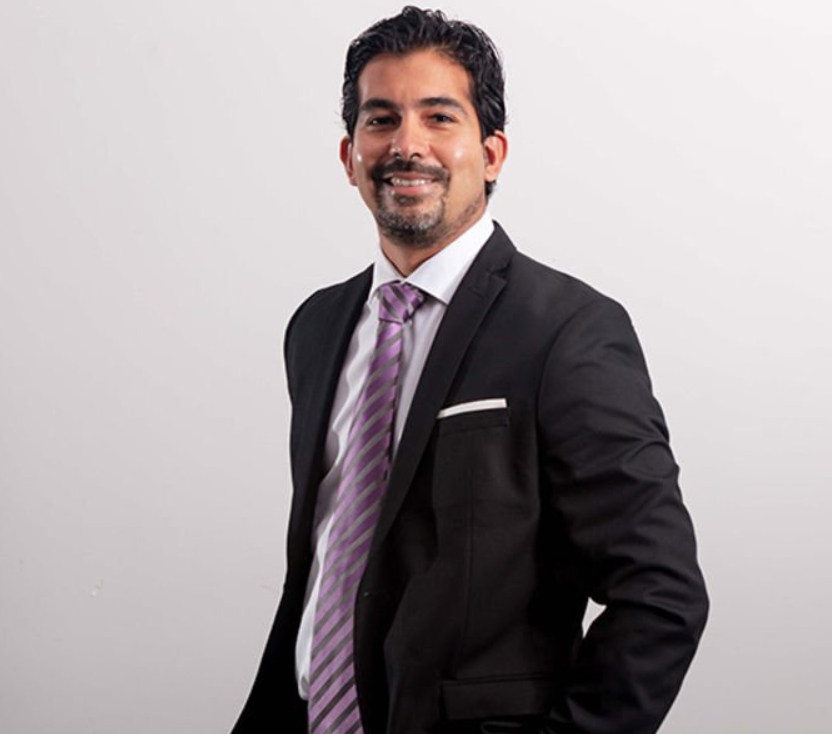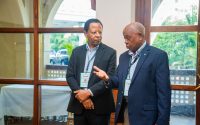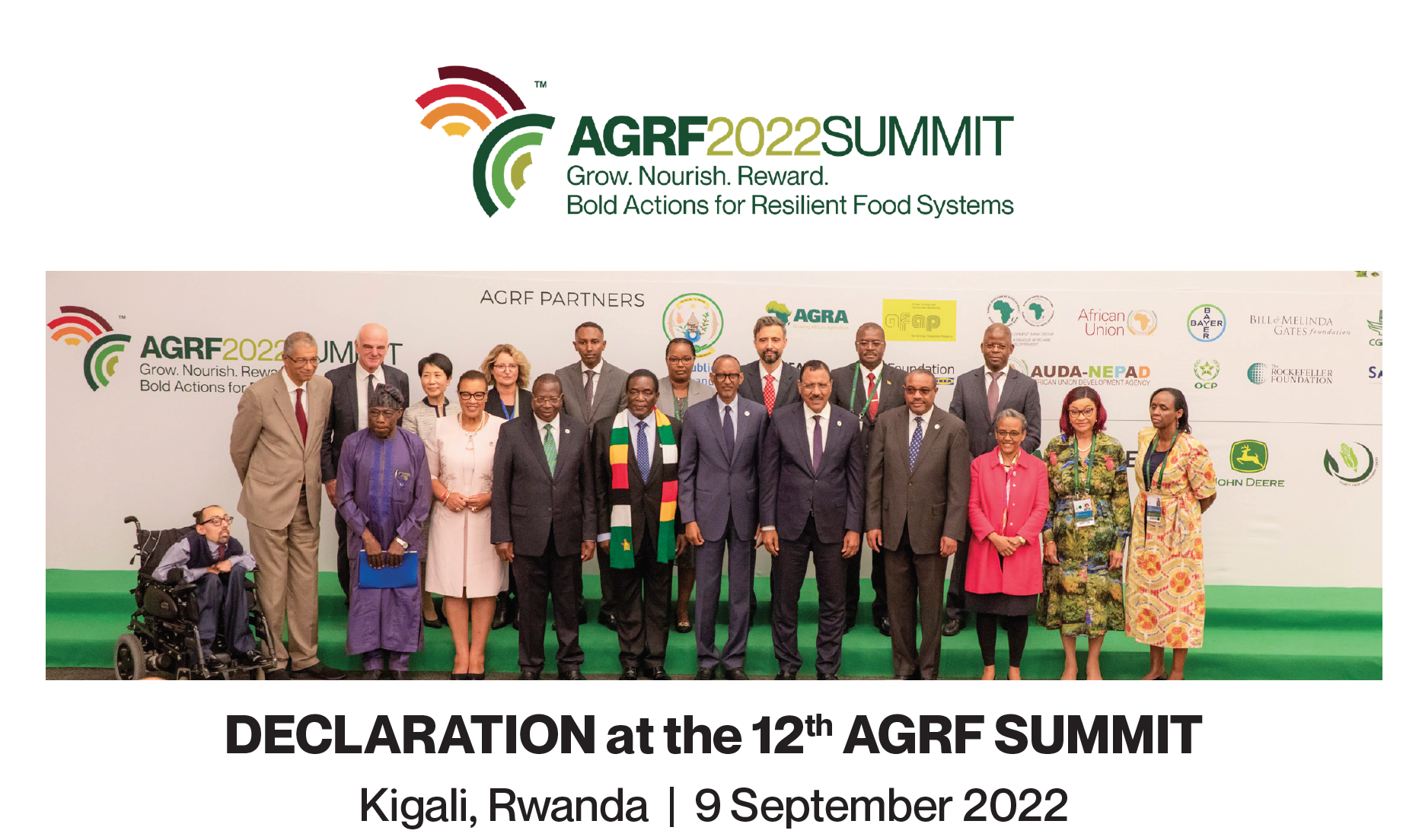Now, let’s start thinking about SAGCOT moving towards being the “Agricultural Growth Centre of Tanzania (AGCOT)”
Mr Geoffrey Kirenga, CEO of SAGCOT
Opening statement at the Stakeholders Consultation Meeting regarding SAGCOT’s strategic rollout on 13 October 2023, at the Ramada Hotel- Mbezi Beach in Dar es Salaam:
Thank you very much! Good morning greetings [they respond], let me reintroduce myself on behalf of the SAGCOT secretariat. I am Geoffrey Kirenga, the CEO of SAGCOT, an organization dedicated to advancing agriculture in southern Tanzania’s highlands. In essence, SAGCOT spans areas from Pwani to Dar es Salaam, continuing along the Tanzanian road towards Zambia, covering regions like Pwani, Morogoro, Iringa, Njombe, Mbeya, Songwe, Ruvuma, and extending to Katavi and Rukwa. This region constitutes roughly a third of Tanzania and is crucial for agriculture, contributing almost 60% of our food production.
To put it briefly, it can be seen as our food basket. It’s important to highlight that about a decade or so ago, the significance of this region in agriculture wasn’t as evident as it is today.
Honestly, nowadays when someone talks about investing in Tanzanian agriculture, the regions of Iringa, Njombe, Mbeya, Songwe, Rukwa, and Katavi, including parts of Morogoro, come to mind. This perception shift is due to the collective efforts of all stakeholders, as mentioned by the chairman of the committee overseeing SAGCOT, known as NGF.
I’m profoundly grateful for the partnerships we’ve nurtured over the years. The camaraderie evident today among all our partners is a testament to the strength of our collaborations.
I was deeply honored to witness some of our leaders, who were there at the inception of SAGCOT, express their support and passion for the initiative. Let’s give a round of applause for their unwavering commitment. [Applause]
So, what exactly is SAGCOT? It’s a collaboration between three key entities: The Agricultural Council of Tanzania (ACT); The Confederation of Tanzania Industries (CTI)
The Government of the United Republic of Tanzania; represented by the Tanzania Agricultural Research Institute (TARI). I’m delighted to see representatives from all these bodies here today.
On 17th March 2023, a significant meeting took place in Dar es Salaam where two major decisions were made. First, the announcement of the AGRF 2023 (Africa Food Systems Forum 2023) was made.
AGRF 2023 took place from September 4-8, it was attended by about 5,400 people. This is even though registration was closed two weeks before the end event. This shows the significance of agriculture in Africa and the important role Tanzania plays in promoting agriculture and feeding Africa.
The response is an indication of the work done by the government under the leadership of our President, Dr. Samia Suluhu Hassan. People are recognizing Tanzania. They have come and invested. It’s safe to say that a significant part of promoting Tanzanian agriculture has been through SAGCOT initiative. On the same day, while introducing the Presidential Food and Agriculture Delivery Council, she appointed me as one of its members. She said it’s because of the great work done by SAGCOT in the southern part of Tanzania. She asked me to bring that success and experience to other agricultural regions.
Shortly after, Agriculture Minister Mr. Hussein Bashe announced that SAGCOT would expand nationwide and would also go to other agricultural regions. It would now be known as Tanzania Sustainable Agriculture Growth Corridors.
So, even the name is changing. Shortly after, I was called by the Permanent Secretary Ministry of Agriculture, and he said that by the end of 2023, we need to have a strategy for how we will go to those areas. I can say the work has begun, and today’s meeting is part of the implementation of the President’s order and also to inform the public and our stakeholders, with whom we’ve worked over the years, that SAGCOT is beginning its journey to other agricultural regions in Tanzania.
It’s heartening to know that, very soon, we’ll have a strategy for rolling out our initiatives in new regions, following the President’s directive.
When I joined SAGCOT, I came from the Ministry of Agriculture where I was the Director of Agricultural Development within the Ministry of Agriculture. When I arrived, I brought with me the experience of serving as a civil servant, now set to work in between the private and public sectors.
When I arrived at the office and was handed over the responsibilities, I found only two people there. One was my assistant who was a consultant that the then government had borrowed from the World Economic Forum, Jennifer Bash. And there was also the caretaker. I was then tasked to create an institution that would undertake the said responsibilities.
At that time, the whole world knew about SAGCOT because the government did a great job promoting SAGCOT internationally by explaining the opportunities, the existing plans, the “Agriculture First” agenda, and how we were set to utilize the southern corridor of Tanzania for our mission. However, what surprised me was that I expected an institutional structure and funding already in place to undertake the tasks. Little did I know I was about to start from scratch.
Another shocking aspect was that from my entire experience, we would plan, seek funds from the government or development partners, and then start executing the plans, focusing on prioritized areas.
However, in this plan, the approach was different. I was told you would identify opportunities, agree on them, and then build on these opportunities through collaboration. Often, I was asked, “What does SAGCOT bring? Do you have work for us? Do you have vehicles?” The usual project procedures weren’t in place. Hence, we had to advocate and preach until one understood and then guide them to use their resources to make changes.
That was the challenge we faced, and it wasn’t an easy one. In this meeting today, we have representatives from regions where we have worked, like the former Regional Commissioner of Iringa. I believe he will get a chance to speak, and I urge everyone to listen to him. Similarly, the former RAS of Iringa at that time, Mrs. Wamoja, as Iringa and Njombe were the first regions of focus.
There’s also the agriculture consultant present here, and I genuinely believe they will have the opportunity to share their insights. We also have farmers who were present at the time represented by various parties. For instance, Mr Ben Mugai can share our journey and Ms. Grace and how their lives transformed.
But it wasn’t just the crop sector. We also worked closely with the livestock sector. I remember initially, a significant opportunity appeared in dairy processing. There was a company known across Tanzania as ASAS. The amount they processed daily back then compared to now, where they have even started producing powdered milk, shows the long journey we’ve travelled together.
Also, in the livestock sector, companies like Silverland started investing. Additionally, AKM Glitters company is present here with us, represented by Eliza. We’ve faced various policy challenges, some even threatening to shut down the investments made. I’m pleased to have my colleague here who is moderating this meeting. He was in the Prime Minister’s office, and we tackled issues together through policy offices.
I’m grateful that the Deputy Director from the Ministry of Agriculture’s policy department is with us, where we did tremendous work removing the challenges that obstructed our necessary reforms. Today, I’m not the main speaker. My only request is that when given the mic, speak your heart out, talk about the benefits and contributions, but also highlight challenges and aspects that need rectification when we move to new regions.
I recognize the non-governmental sectors represented by ANSAF (representing many NGOs.) Also, I recognize the presence of the CEO Roundtable, and I’m grateful for your attendance.
I shouldn’t end without recognizing the presence of the Vice President’s office dealing with environmental issues. We’ll continue acknowledging each other more. One of the closest institutions we work with is those conducting economic and policy analysis. I am very thankful to those from ESRF, and ……; you all have contributed significantly to the tasks we’ve undertaken.
Lastly, I want to recognize the great work done in collaboration with my SAGCOT team. Please stand so they can see you again [applause heard]. Honestly, I just stood to discuss what we did together. When asked to move to other regions, I believe your faces here will be captured for records, so when we go there, they recognize you.
Lastly, as we move to other regions, all of you who have worked with us, those present and those unable to attend, are witnesses to our efforts. I urge you to be ambassadors of our work, either by speaking to other leaders in these new regions or accepting their visits.
I understand the challenges of frequent visits, with institutions like TARI being one of the most frequently visited. TARI is now a board representative of the Tanzania Agriculture Council, represented by Jacqueline Mkindi, who posts updates daily, especially in horticulture because it’s a highly favoured sector.
So when we visit or invite you, please be happy and accept our invitation. Doing so is crucial as we will be able to provide the education we were hoping for.
There’s a delegate from Zanzibar, please stand up. We haven’t reached Zanzibar, but we’ve collaborated as participants and partners. We’ve been able to transport crops through our partners like TAHA Agriculture. We’ve also managed to transport crops like sunflowers and many other policy-related tasks. You can truly see the transformation.
I believe as we move forward, we’ll work closely with Zanzibar because there are unique agricultural opportunities due to the island’s climate. I’ll end here. Thank you so much. Now, let’s start thinking about SAGCOT moving towards being Tanzania’s Sustainable Agriculture Growth Corridors. Thank you so much! [loud applause heard].


